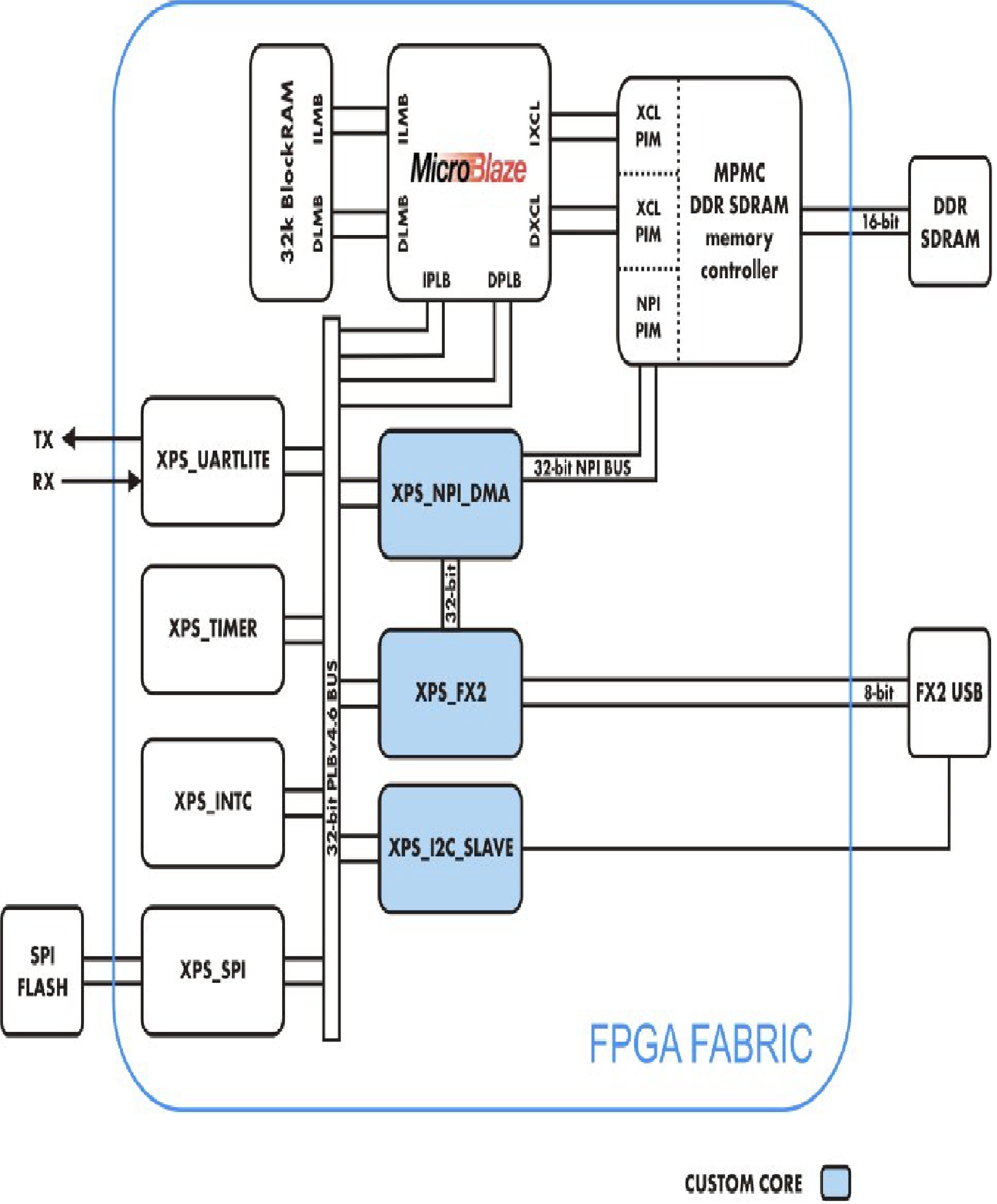Page History
The Xilinx FPGA itself on the Trenz Electronic USB FX2 modules is blank when powered off. To define an FPGA functionality, a logic architecture Logic Architecture Layer (also called FPGA image or FPGA bitstream) should be defined and loaded into the device at power-on.
The Logic Architecture Layer is defined in a .mcs or .bit file (.bin file is also possible). The Logic Architecture Layer is defined (and .bit/.bin/.mcs are created) using the Xilinx software applications:
- XPS, if MicroBlaze is not used
EDK (or both), if MicroBlaze is used.
The Logic Architecture Layer could be loaded from SPI Flash or from JTAG and/or USB connections. See here.
| Note |
|---|
A TE USB FX2 module comes with SPI Flash preloaded with a reference design. Those preloaded image is just for getting started demo. For real designs:
|
| Note |
|---|
The use of preloaded Reference Architecture Layer is a user choice. If the user runs:
the and SPI Flash Commands are available through C++/.NET . MicroBlaze API Commands (MB Commands) are available only if Reference Architecture Layer (or derived compatible Logic Architecture Layer). and SET_INTERRUPT command (two ) could be used without Reference Architecture Layer (or derived compatible Logic Architecture Layer), but they are usually usefull only with Reference Architecture Layer. |
Preloaded Logic Architecture Layer (in SPI Flash): Reference Architecture Layer description
The reference design architecture was built using Xilinx Embedded Development Kit (EDK). Basically, it is an embedded system on a chip with a Xilinx MicroBlaze 32-bit soft microprocessor. The MicroBlaze i (MB) nitializes initializes and sets up the system.
Standard EDK cores are used to implement a serial interface (XPS_UARTLITE), an SPI FLASH interface (XPS_SPI), a timer / counter block (XPS_TIMER) and an interrupt controller (XPS_INTC).
...
| Scroll pdf title | ||
|---|---|---|
| ||
XPS_I2C_SLAVE custom IP block
It is a logic block for low speed bidirectional communication between the FPGA and a host PC. It is usually used for command, settings and status communication. It contains 6 × 32-bit memory mapped registers:
...
MicroBlaze Driver code: here.
XPS_NPI_DMA custom IP block
It is a high speed DMA (direct memory access) engine which connects to the MPMC (Multi-Port Memory Controller) VFBC (Video Frame Buffer Controller) port. It enables high speed data streaming to/from external memory (DDR SDRAM) and multiple sources. It can be controlled by a processor using 6 × 32-bit memory mapped registers attached to the PLB (peripheral local bus). For more information about registers, see Xilinx LogiCORE IP Multi-Port Memory Controller (MPMC) data sheets (Xilinx DS643), Video Frame Buffer Controller PIM section.
When data is sent from the USB-host to a USB FX2 module high-speed endpoint (high speed communication channel), it is automatically stored into the RAM by the custom built DMA engine (XPS_NPI_DMA) at a specified buffer location. The reference design software running on the MicroBlaze verifies the transferred data at the end of transmission and sends to the USB host a notification about the data test (passed / failed).
...
MicroBlaze Driver code: here.
XPS_FX2 custom IP block
It is a logic block for high speed bidirectional communication between the FPGA and a host PC. It contains 2 kbyte FIFOs for data buffering. More information about the 5 × 32-bit memory mapped registers is contained in the #project_root#/pcores/xps_fx2_v1_00_a/doc/ folder of the reference design project folder.
When data is sent form a USB FX2 module high-speed endpoint to the USB host, it is automatically fetched from the RAM via the custom DMA engine (XPS_NPI_DMA) and forwarded to the XPS_FX2 core in 1-kbyte packets. MicroBlaze throttles the throughput to prevent XPS_FX2 TX FIFO overflow.
...
MicroBlaze Driver code: here.
Source Code of the reference architecture
The source code of the reference architecture of the Trenz Electronic USB FX2 Technology Stack is released on GitHub (TE0300, TE0320 and TE0630).
